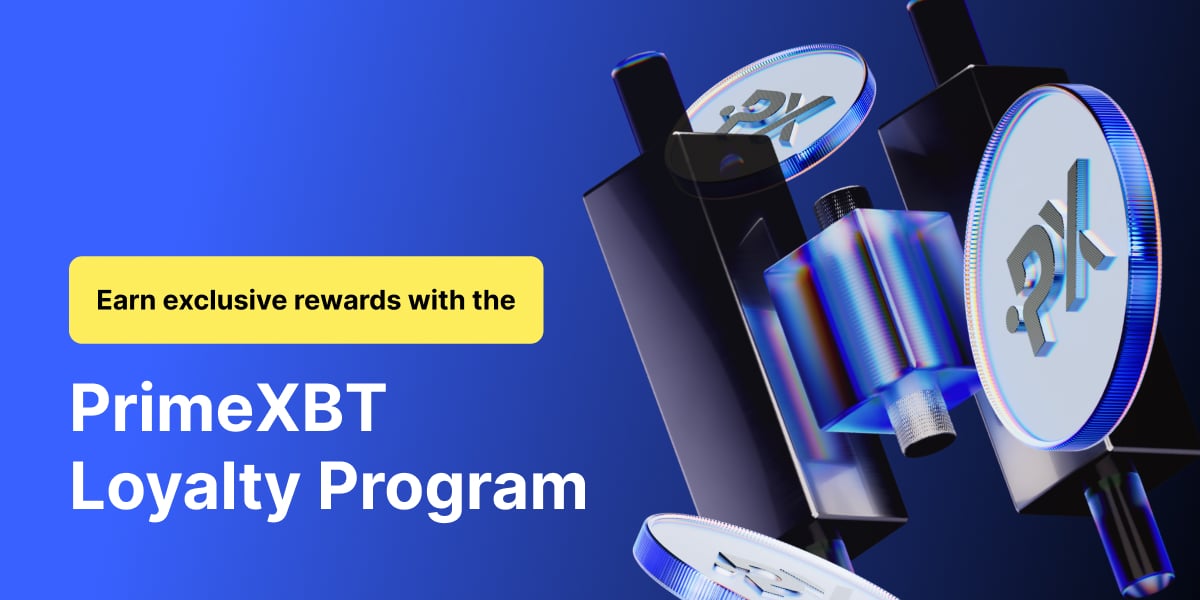Crypto portfolio allocation is crucial to survival over the longer term. You are betting on the future when trading a cryptocurrency or investing in it. The future is uncertain, so your returns can be as well. However, diversifying your allocations can help limit some of the dangers.
What is Cryptocurrency Portfolio Allocation?
Cryptocurrency Portfolio Allocation is the same thing as diversifying your portfolio in any other asset, and it is a way to diversify your holdings to avoid massive drawdowns. Remember that cryptocurrency is a relatively new field, so volatility will undoubtedly be a significant concern. By diversifying, you can mitigate some of the inherent risks.
Why Diversify Your Crypto Portfolio?
The most apparent reason to diversify your crypto portfolio is to protect yourself. You could face financial ruin rather quickly if you have 100% of your trading capital invested in one coin. However, if you have a handful of coins, while some drop, others may rise. This helps mitigate many dangers of investing in a new asset. Crypto allocation is one of the most important things you can do over the long term as far as mitigating risk via diversification.
What Types of Cryptocurrency Should I Have in my Portfolio?
Now that you understand a bit about cryptocurrency asset allocation, the next question is what kinds of cryptocurrency you should have in your portfolio. The following groups of cryptocurrencies make up most of what you will be dealing with, and each has its unique feature. Understanding what they do and their risk profile will go a long way toward success.
Stablecoins
Stablecoins are crucial as they are pegged to more conventional fiat currency. Fiat currency is nowhere near as volatile as crypto, so there are times when you will want to have a certain amount of your assets converted over to stablecoins such as Tether and USDC. These operate as “digital US dollars,” as they are worth the same as the US dollar. When things get tough, this is your safety net. While it may not make intuitive sense to have asset allocation in crypto portfolios toward fiat currency, it can sometimes save you from massive losses.
Payment Cryptocurrency
One of the most prominent places where crypto is supposed to revolutionize our transactions is through the payment space. Because of this, it makes a lot of sense to own a certain amount of these assets, the most obvious being Bitcoin. That being said, there are others to consider, such as Cardano and Ripple.
Utility Tokens
Utility tokens are used for a specific use case scenario. At this point, utility tokens are highly speculative because it requires that the network core function is something that’s going to be used. Because of this, utility tokens are considered to be highly speculative in general. Some examples might be the Basic Attention Token, which allows users to tip certain digital services on the web. It is meant to pay content creators and publishers.
Golem is another utility token used to create an economic system allowing individuals to rent computing power. While these are great ideas, the question becomes whether or not the network gains traction.
At best, a utility token should be a tiny part of your portfolio because you are relying on a business or network to continue being profitable. As we are still in the early stages of crypto adoption, almost all companies should be considered risky at best.
Central Bank Digital Currencies (CBDC)
Be aware that various central banks worldwide are studying the possibility of using Central Bank Digital Currencies. These are not quite the same thing as crypto and, unfortunately, will more likely than not be used to track individuals. There is a massive uproar about these, but it seems that it is only a matter of time before they appear.
| Stablecoins | Large-Cap | Tokens |
| Steady Price, pegged to currency | Price fluctuates, many holders | Fluctuation of price can be extreme. |
| Low risk. | Moderate risk | High risk |
| High APY (staking.) | Moderate APY (staking). | Very High APY (staking). |
Building a well-balanced crypto portfolio
Building a well-balanced portfolio is one of the most important things you can do for the longevity of your trading account. Simply going “all in” into a coin is dangerous and a great way to lose money. That being said, you need to understand what type of investor you are and then build the appropriate portfolio to match your needs.
5 Ways to Allocate Crypto in your Investment Portfolio with Crypto Portfolio Examples
the potential ways that you can build a portfolio are unlimited. The following 5 are a good “Birdseye view” of what you can do. By understanding your risk tolerance type, you can use these setups as a general guideline.
Conservative
A conservative crypto portfolio includes using just the Large-cap markets, which generally refers to the top 10 cryptos by value. This includes the largest coins, thereby mitigating some of the concerns that they may completely disappear. Remember, cryptocurrency is a relatively new field, so there are no guarantees.
However, keeping crypto that is well known and has plenty of liquidity is by far the safest way to go. This is because it would take an extraordinary turn of events for coins such as Bitcoin, Ethereum, Solana, and others that have so much interest to disappear completely. While nothing is technically “safe” regarding crypto, these would be the closest thing.
It’s also worth noting that sometimes people will transfer some of their wealth into stablecoins, which are pegged to fiat currencies. This allows investors to escape volatility for a time.
Aggressive
An aggressive portfolio takes advantage of smaller markets. The biggest problem with this, of course, is the massive amount of volatility, so you should start to think about whether or not you can handle massive drops in value at times. This includes new and speculative coins but occasionally has the added benefit of huge moves to the upside.
Any coin that is aggressively moved by social media could fall into this category. That being said, this is by far the most dangerous way to invest. Trading aggressively has occasionally led to massive gains and huge headlines, but more often than not, it leads to the destruction of the trading account and trading capital. As a general rule, those who became millionaires overnight were simply lucky and aggressive.
Long-Term.
Long-term investing is what most crypto holders do. This is when you buy assets and simply hold them. Most of the time, traders and investors will store their crypto in a cold storage wallet. They keep their crypto off-exchange for safety, and since they have no interest in trying to get rid of it anytime soon, this presents no problems
Most people who hold Bitcoin tend to fall in this category, and the same could be said for Ethereum. However, remember that the person trading for the long-term is not worried about the occasional fluctuation. This is somebody who’s looking out years in advance.
Mid-Caps.
Holding a mid-cap portfolio means hanging on to the coins that rank from 11 to 50 as far as market capitalization is concerned. This portfolio typically returns more than a conservative portfolio but has the same general dynamics. This is because it will need the more established coins to rally to drag them up with it.
These coins tend to have a certain amount of utility but are still not quite mainstream. Some of them are coins that were once very popular but have hit a bit of a snag along the way. An example of this would be Tron, Polkadot, Polygon, and Shiba Inu. Keep in mind that this portfolio only performs in a bullish crypto market.
80/20.
The so-called “80/20 portfolio” is when you mix 80% of your holdings in large-cap coins such as Bitcoin and Ethereum and 20% of your coins in higher-risk assets. For example, you may hold 40% Bitcoin, 30% Ethereum, 5% Cardano, 2.5% Sushi, etc.
The idea is that a considerable portion of your portfolio should be more stable. Still, if the crypto market suddenly takes off, you can get outsized returns by the 20% you allocated to the smaller assets. Remember that this is very similar to what your retirement account probably looks like, as most allocations will be to larger market capitalization companies. It works in the same theory that you want steady returns, but you also want a certain amount of your trading capital to be exposed to the biggest winners whenever possible.
Conclusion
When investing in anything, portfolio allocation is crucial. Crypto is not going to be any different, as there are different volatility profiles with each market. The Bitcoin market is much less volatile than it used to be, but there are still other coins that can move 10% in a day quite frequently. Because of this, the prudent investor will have little exposure to assets that will do well in volatile situations where people are willing to throw money at the market.
That same investor will also recognize that there are times when markets behave out of a place of fear, and therefore some of these riskier assets will perform poorly. This is where the “slower moving” and more stable investments perform better, at the very least losing less.
For example, in times of extreme greed, it may make sense to own cryptos like Chiliz, Dogecoin, or other smaller market cap coins. If the risk appetite changes to risk aversion, it is times like this where Tether might be an excellent place to “hide out.” It’s also possible that Bitcoin may see a bit of a “safety bid” amid that scenario.
Over the longer term, investors with more stable returns tend to fare better. This is because it’s easier to deal with drawdowns steadily and stably than to see sudden spikes in volatility wipe out vast parts of your portfolio.
What is a well-balanced crypto portfolio?
A well-balanced crypto portfolio includes a wide breadth of investments. Bitcoin is preferred to be in almost all crypto portfolios and stablecoins. That being said, when more risk appetite is being taken, it makes sense to continue to invest in crypto that moves much quicker, offering volatility to increase profits.
How should I allocate my crypto portfolio?
The most important thing a crypto investor can do is to spread their holdings relatively wide. It’s important to understand that some crypto is much more speculative than others, but on the whole, crypto itself is speculative.
The “safest” crypto falls in the purview of the stablecoins, followed by Bitcoin. Further out on the risk appetite spectrum will be meme coins and the particularly specialized ones, such as those built for social apps, etc.
How many cryptocurrencies should I have in my portfolio?
Generally, having over ten is helpful, but it will come down to how much money you have to put into your portfolio. The market is diverse, so having speculative and more stable investments makes sense.


